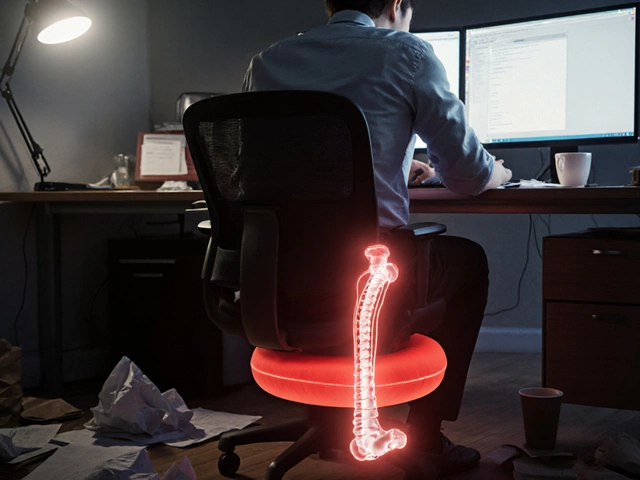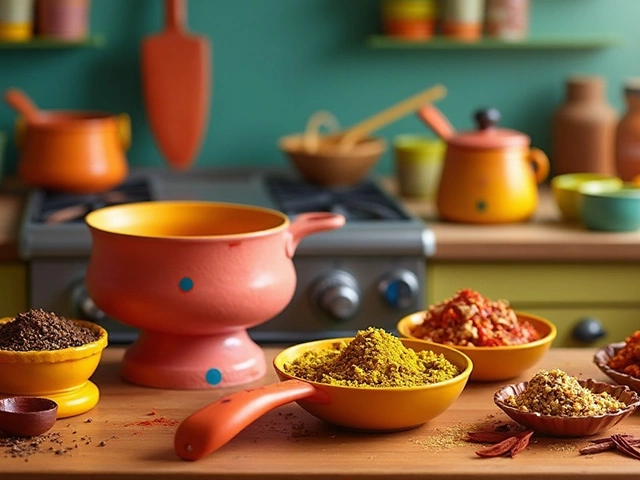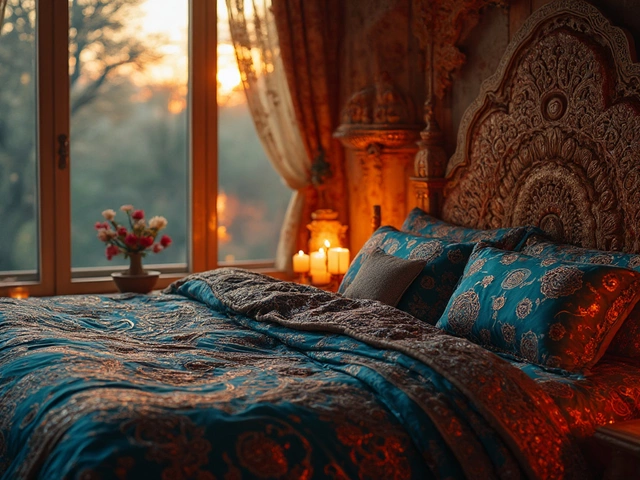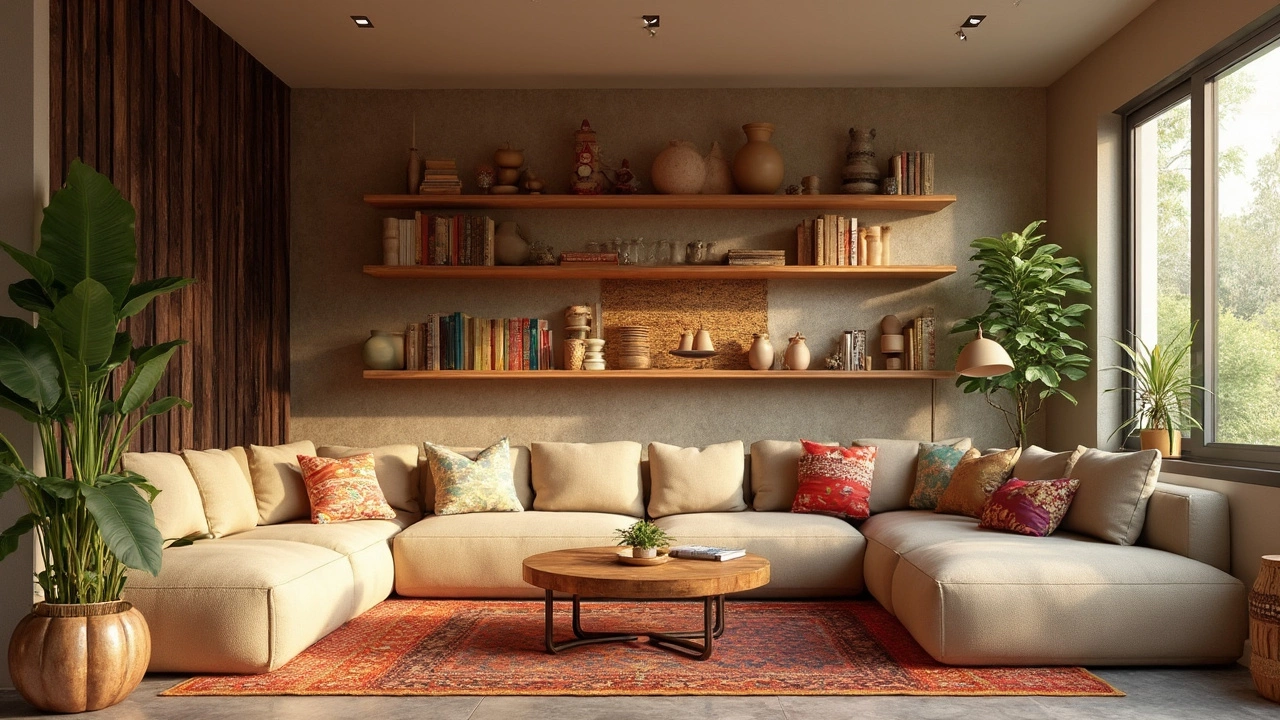
Think floating shelves are just a leftover from a decade ago? You're not the only one who's wondered that while scrolling home design photos. But here's the truth: these shelves keep popping up for good reasons—mainly because they do a lot with a little space. People keep choosing them for tight kitchens, rental apartments, and even fancy living rooms, not just because they're easy to install, but because they're a blank canvas for style and storage.
Ever noticed how cluttered a room can look when every inch is packed with furniture? Floating shelves solve that issue by getting stuff off the floor and making walls useful without adding bulk. Need a spot for your keys, plants, or that stack of novels you pretend to read? There you go. No wonder they show up in everything from DIY videos to high-end design makeovers.
- Why Floating Shelves Became a Sensation
- Are Trends Really Everything? Floating Shelves in Modern Homes
- Mistakes That Make Floating Shelves Feel Outdated
- How to Make Floating Shelves Pop in 2025
Why Floating Shelves Became a Sensation
Back when bulky cabinets ruled the scene, floating shelves shook things up. They first popped up big-time in the early 2000s, thanks to their clean, no-bracket look. Suddenly, everyone could put up shelves that seemed to hover. That was new, and people loved how they didn’t eat up floor space or make a room feel crowded. Floating shelves grew popular fast—mainly because they worked in tiny apartments as well as open-concept homes.
If you check home magazines or IKEA trends between 2010 and 2020, floating shelves always made the shortlist. Designers started highlighting them as a way to show off cool objects or create mini art galleries in living spaces. For renters, the big win came from how easy they were to mount and remove. For homeowners, floating shelves offered endless ways to organize kitchens, bathrooms, bedrooms—you name it.
Here's a table with some interesting numbers about floating shelf demand over the past decade:
| Year | Online Searches (US, monthly avg.) | Related Instagram Posts |
|---|---|---|
| 2015 | 33,000 | 42,000 |
| 2018 | 44,000 | 75,000 |
| 2021 | 59,000 | 109,000 |
| 2024 | 68,000 | 155,000 |
This steady rise in interest isn't just hype. Floating shelves succeed because they fit different needs. People use them to:
- Show off plants, books, or collectibles
- Make kitchens feel less boxed in than with big cabinets
- Hide clutter in bathrooms without adding bulky furniture
- Style up that blank wall above the bed or couch
The best part? You only need a drill, a level, and a few screws to put them up. No woodworking degree required. That do-it-yourself vibe made floating shelves a hit, especially during all those stay-at-home years when people got into upgrading their space on a budget.
Are Trends Really Everything? Floating Shelves in Modern Homes
People tend to worry way too much about whether something is “in” or “out,” especially when it comes to decorating. Here’s the deal: floating shelves have stuck around all these years because they fit real-life needs, not just passing trends. Scroll through inspirational Instagram feeds—yep, they’re still everywhere. The National Association of Home Builders reported in 2024 that open shelving (which includes floating shelves) is requested in 38% of new kitchen remodels. That’s up from 26% just five years ago.
Why? They're flexible. Got a tight city apartment, but need storage? They work. Want a clean, “less is more” vibe in your living room? Floating shelves handle that, too. They slide into everything from boho styles to super-minimalist looks, as long as you don’t overload them. Even high-end architects use them for displaying art, cookbooks, or sound systems without making a space feel stuffed.
Let’s get real. TikTok and Pinterest show people using floating shelves to solve problems, not just to look trendy. Here’s the kind of stuff you see:
- Bare kitchen walls get extra storage without crowding the room
- Bathrooms use them to free up cabinet space and make the area look less boxy
- Small bedrooms put shelves above beds or desks for books and plants
- Entryways grab vertical space for baskets, shoes, or mail drops
Check out this table showing where floating shelves get used the most (based on a 2024 survey by Home Decor Updates):
| Room | Percentage of Rooms Using Floating Shelves |
|---|---|
| Kitchen | 41% |
| Living Room | 29% |
| Bathroom | 15% |
| Bedroom | 10% |
| Entryway | 5% |
So, are trends everything? Not really. Floating shelves stick around because they just work. Nobody’s going to ditch a smart storage trick just because it’s been seen before. If you use them right, they blend into almost any home style and make your place feel put together—not passé.
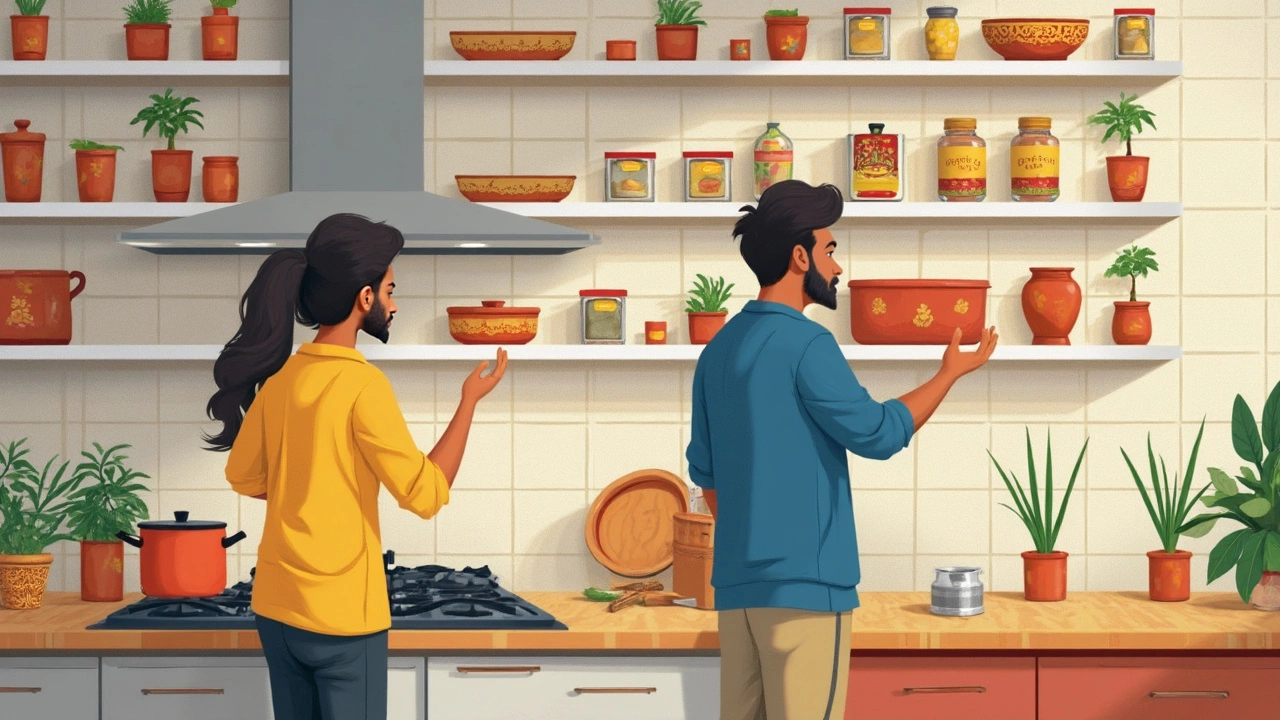
Mistakes That Make Floating Shelves Feel Outdated
Floating shelves should be simple and sleek, but lots of people accidentally make them look outdated instead. You might not realize it, but a few common mistakes easily drag this look back to the early 2000s instead of keeping things fresh.
Here’s what actually trips people up:
- Chunky or bulky shelves: The thick, MDF-style floating shelves that were everywhere years ago can make spaces look heavy and dated now. Designers now lean toward slimmer profiles—think two inches or less in thickness—for a clean, modern vibe.
- Bad placement: Floating shelves hovering too high, too low, or jammed in weird spots? That throws everything off. Shelves need enough space above and below to breathe—most pros leave at least 12-18 inches between shelves for display, and never cram them right to the ceiling.
- Overloading with stuff: Filling shelves with random knickknacks or jamming them full of books is a classic way to make shelving look messy and dated. The trend now is to go minimal: just a few favorite items, some open space, and a hint of greenery.
- Mismatched finishes: If the shelf material doesn’t work with your room—like orange faux wood in a room with matte-black accents—it clashes, fast. Even cheap shelves look better when colors and materials actually blend in.
- Hardware showing: Most people want that “floating” look and get frustrated if messy brackets or screws are visible. When the hardware shows, the shelf instantly loses its cool factor. Go for hidden mounts or brackets made for a true floating appearance.
Check out some quick facts that show how these mistakes add up:
| Mistake | Impact on Room Perception (Survey 2024) |
|---|---|
| Heavy/bulky shelves | 72% said it made the room feel smaller |
| Messy styling | 68% thought it looked cluttered and less organized |
| Visible hardware | 59% felt the shelf looked cheap or unfinished |
The best move? Pay attention to proportions, stay true to your room’s style, and don’t crowd those shelves. Kept simple and tidy, floating shelves can look sharp for years to come.
How to Make Floating Shelves Pop in 2025
If your floating shelves look kind of plain right now, that’s actually good news. Neutral shelves are a perfect blank slate, and there are loads of ways to jazz them up this year so they actually stand out. Let's walk through what works right now and what will keep those shelves feeling fresh, not dated.
- Mix up the materials: Home design experts say 2025 is all about combining wood, metal, and even glass on or around your floating shelves instead of sticking with all white or basic wood finishes. A real crowd favorite is light oak shelves with matte black brackets or accents—sharp, but not too flashy.
- Layer height and depth: Instead of lining everything up, play with stacking books horizontally and vertically, and put objects of different sizes together. The days of putting five identical picture frames in a row are done.
- Work in greenery: According to a Statista survey from January 2025, 62% of polled homeowners under 40 have added at least one plant to their shelving displays. Small hanging or trailing plants like a pothos or string-of-pearls instantly make shelves feel alive.
- Choose bold or textured backdrops: Peel-and-stick wallpaper behind shelves is huge this year, especially in patterns that pop like geometrics. If you’re not a wallpaper person, even a painted stripe in a contrasting color behind the shelves can give a custom vibe.
- Use lighting: Plug-in LED strip lights or battery-powered puck lights are everywhere for a reason—they make even basic shelves feel high-end without rewiring your whole room.
Here’s a quick table to sum up which trends are making floating shelves stand out in 2025, and what’s best skipped if you want your space to feel current:
| Trend | Embrace | Avoid |
|---|---|---|
| Materials | Mixed woods & metals | Glossy white MDF |
| Arrangement | Layered heights & textures | Matching symmetry |
| Decor | Plants & ceramics | Only picture frames |
| Backdrops | Bolder colors/wallpaper | All-white walls |
| Lighting | LED strip or puck lights | Dark, unlit corners |
One last tip: don’t overdo it. A few well-chosen items on your shelves have more impact than packing them edge to edge. Aim for pieces you actually like, not what you think should be there. Floating shelves have stuck around because people keep finding ways to make them personal. That’s what keeps them feeling new, even in 2025.
